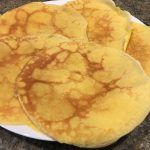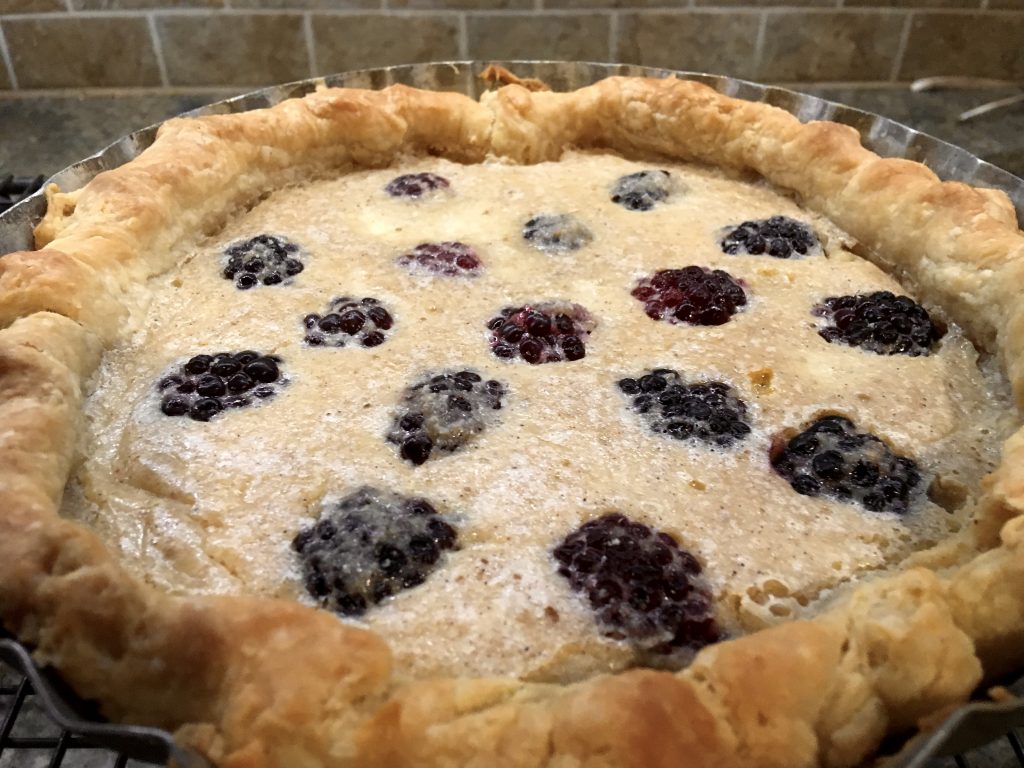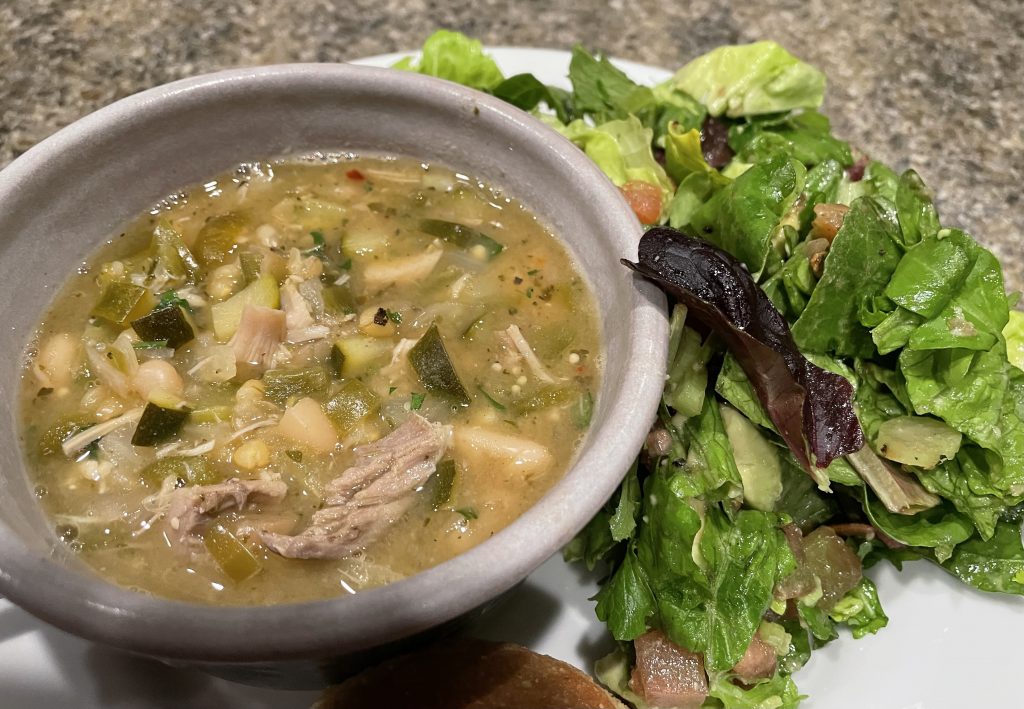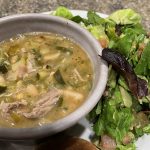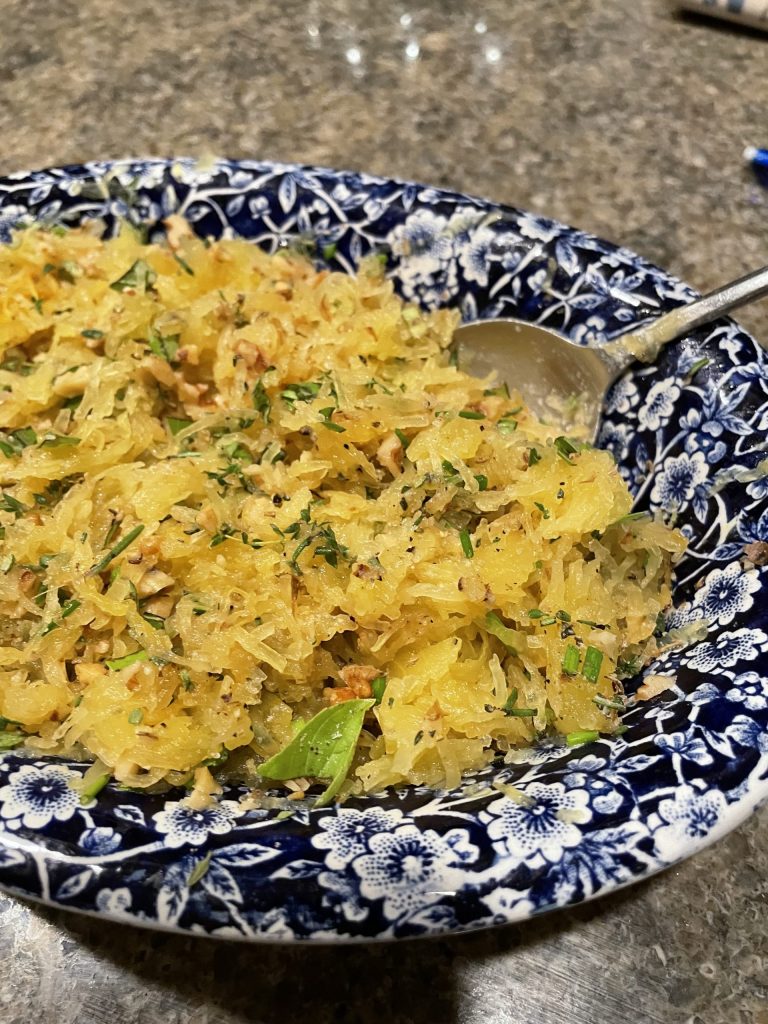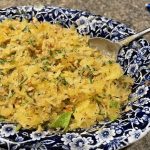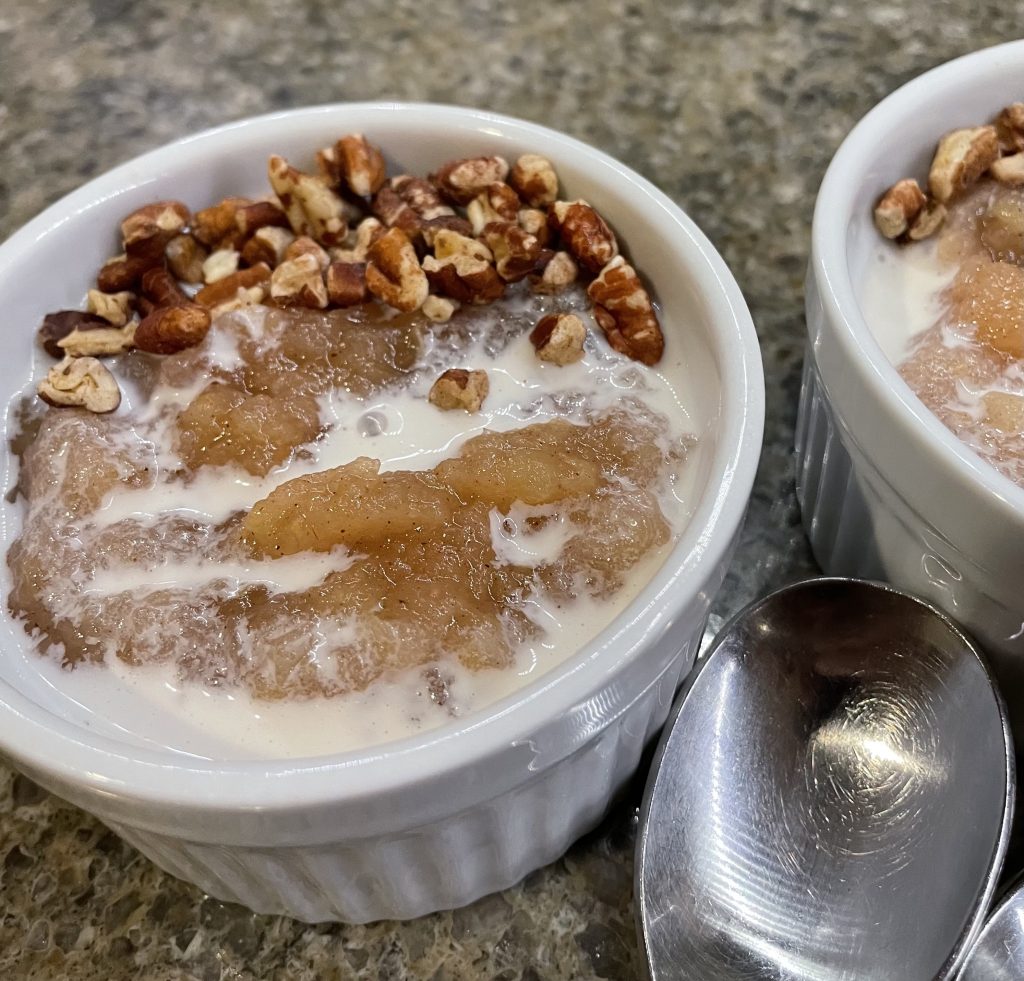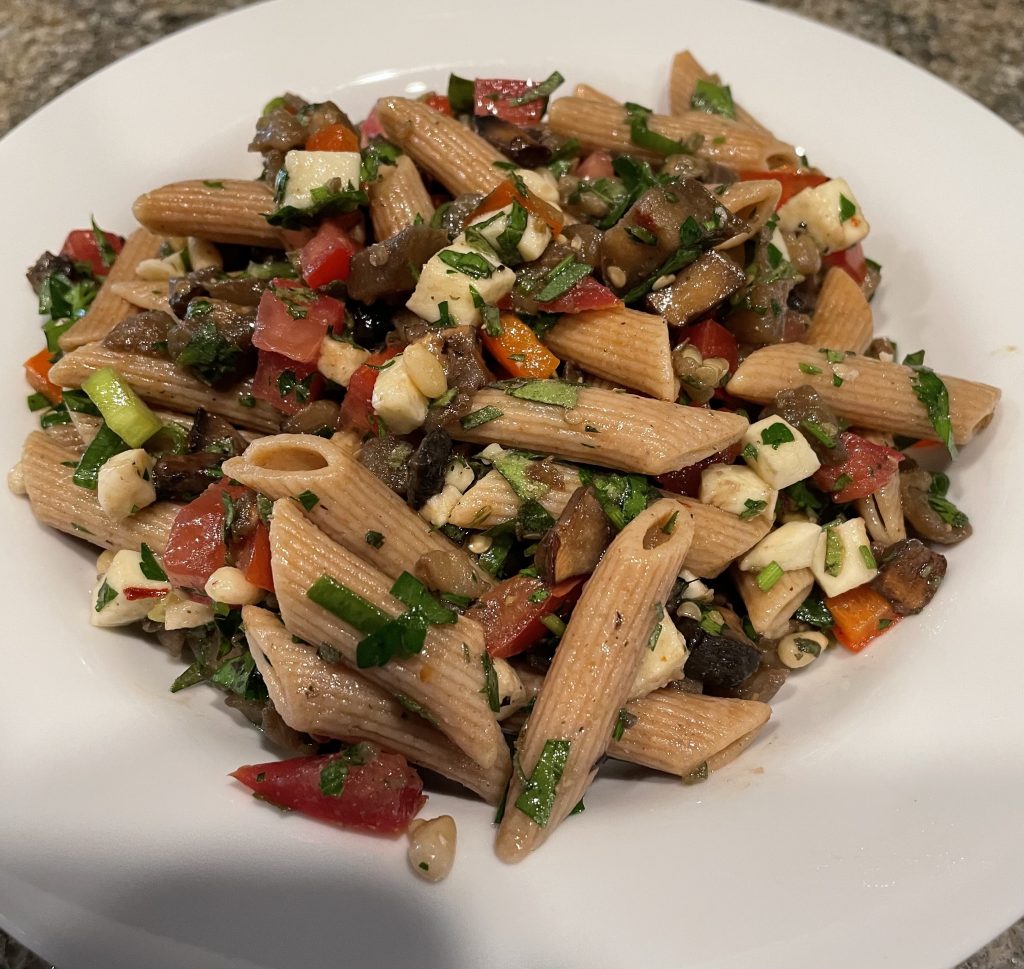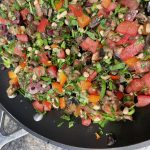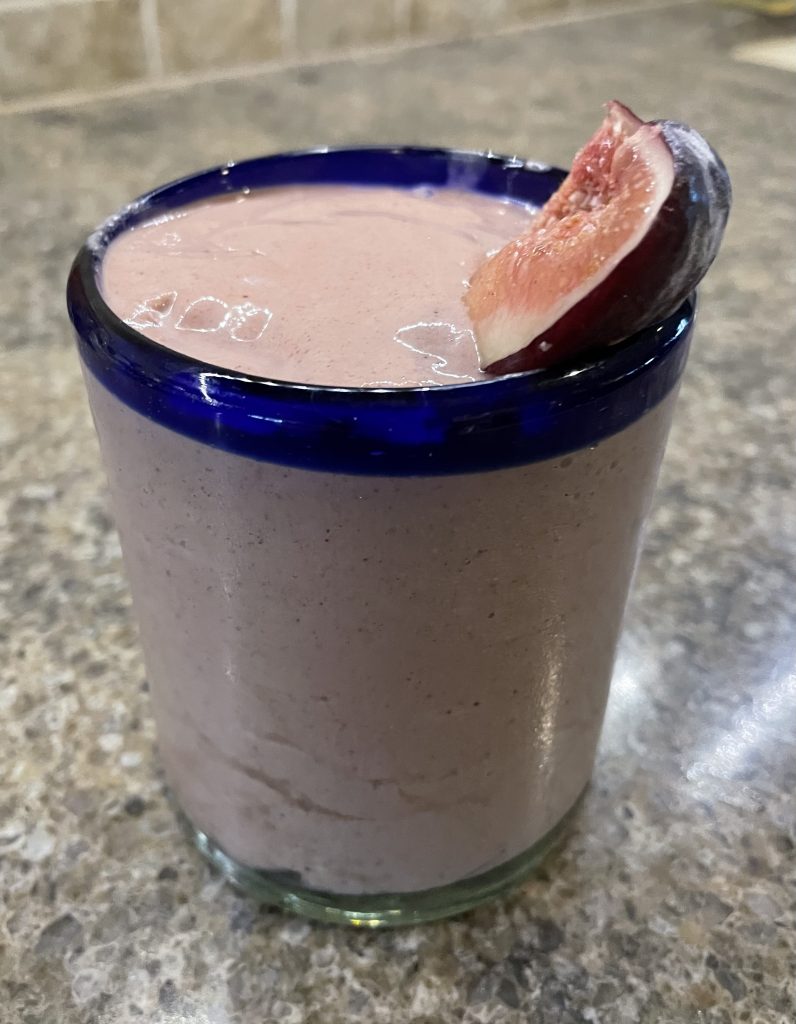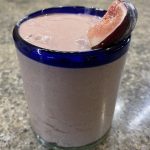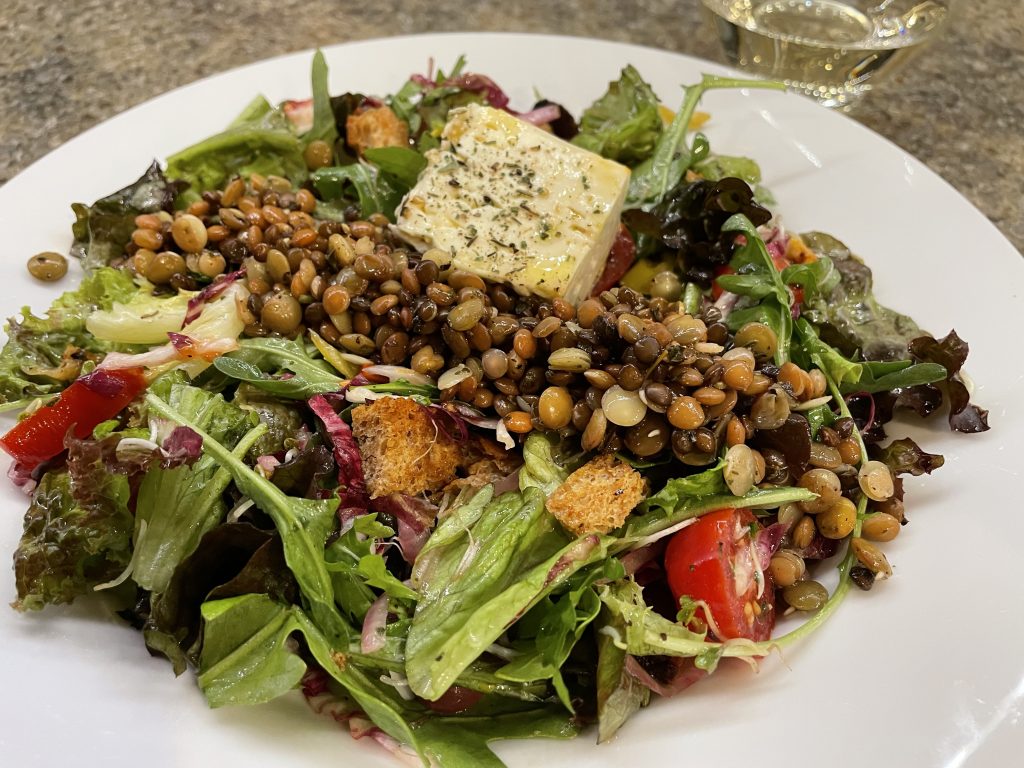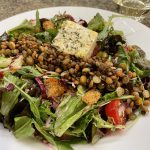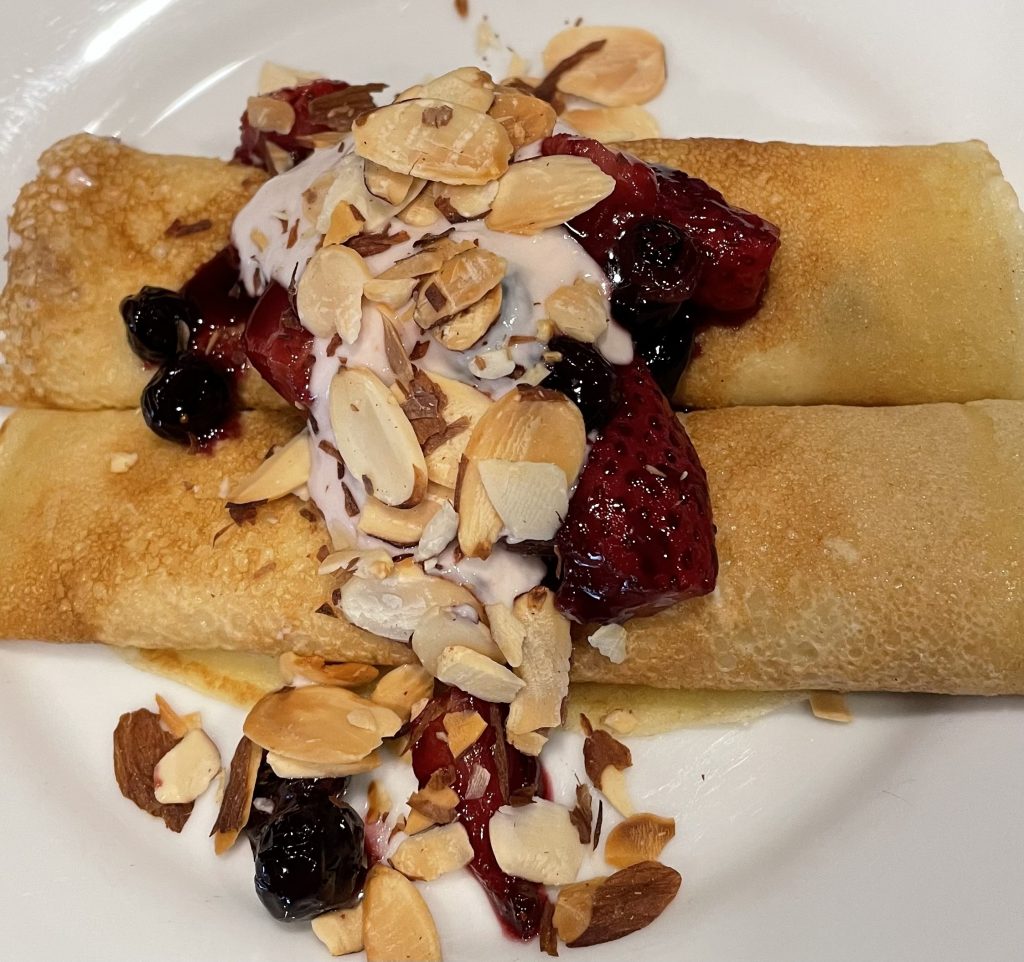
Listen to the soft calls of the mourning dove and bright chirp of the bobwhite. These were the summer sounds I heard each morning, waking to the sun streaming in my east window. Mornings like this meant I was probably on school break, no early morning commitments or rushing to make the school bus. It also meant that Mom was likely in the kitchen, with breakfast on the go. And on the best mornings, she was making crepes.
Crepes are super thin, egg rich pancakes, originating in France. Made without sugar, they are delicious on their own, with butter and maple syrup, which is how Mom served them for breakfast. I always envied the ease with which she rolled hers into neat cylinders, the syrup pooling around the edges. Crepes also provide a neutral canvas for both savory and sweet applications, ranging from combinations of creamed vegetables and proteins to dessert crepes with sweet, creamy fillings. The “in or out” status of the crepe varies with time here, it seems. Restaurants with the entire menu consisting of crepes with various fillings and toppings have been popular at various points in my life. And yes, there was an appliance at one time called the crepe maker. While not particularly in vogue at the moment, I can always order them at our local French bistro, where they never go out of style. Or get out my trusty seasoned cast iron skillet and make them myself.
Crepes are versatile pancakes. I’ve made absolutely beautiful crepes from buckwheat, oat, whole grain and white flours. They are a bit tricky to make the first time, though. The batter is quite thin, and quickly poured and swirled to coat the bottom of the skillet. I use an 8-inch cast iron skillet; much larger and you might end up with scrambled crepes! Slide a narrow spatula underneath one edge to the middle, then a quick flip. You’ll find many recipes with varying proportions of eggs to flour to liquid, affecting how easy this process is. Mom’s recipe was particularly delicate as she emphasized the egg with less flour and milk. The recipe I’m posting has a bit more flour and milk, allowing it to swirl easily in the pan, while being simpler to flip. Can one make them plant based? I have made them successfully with Just Egg, though they are more delicate and harder to flip. There are vegan versions, which omit the eggs completely, but I’d have a tough time calling those crepes…
The ones I’ve prepared today are filled with Greek yogurt, and topped with a balsamic roasted berry medley. A sprinkle of toasted almonds results in a high protein breakfast that fuels me throughout the morning. The same bird sounds wake me these days, along with the raucous call of the Gambel’s quail. Sun still streams in the window, but the only way there will be crepes for breakfast is if I make them…
Crepes with Balsamic Roasted Berries
Ingredients
Basic Crepes
- 2/3 cup whole wheat pastry flour can use white whole wheat or all-purpose
- 1/4 tsp salt
- 2 large eggs, well beaten
- 1 cup milk or alt milk
- 1 tbsp neutral flavored oil I use avacado
- oil, for the skillet
Balsamic Roasted Berries
- 1 lb berries I used strawberries and blueberries
- 2 tsp olive oil
- 2 tsp balsamic vinegar
- 2 tsp brown sugar
- 1 1/3 cup Greek yogurt to serve
- 1/4 cup sliced almonds, toasted
Instructions
Basic Crepes
- Combine the flour and salt in a medium bowl. In separate bowl, combine the beaten eggs, milk and oil. Add all at once to the flour mixture, then whisk until smooth. This can also be done in a blender.
- Heat a well seasoned 8-inch cast iron skillet or similar sized non-stick skillet over medium heat, then brush lightly with oil. For each crepe, pour a scant 1/4-cup of batter into the skillet, then quickly rotate the pan to swirl the batter and cover the bottom. Cook for around a minute, until the edges begin to crisp and pull up from the edge of the skillet. Using a thin pancake turner, insert under the edge and push gently to the middle. Quickly flip and cook briefly to brown the other side. Remove to a plate, and repeat until all the batter is used.
Balsamic Roasted Berries
- Preheat the oven to 350 degrees F. Pour the berries onto a sided sheet pan. Drizzle with the olive oil and balsamic vineger, then sprinkle with the brown sugar. Combine well to coat the berries. Place them into the oven and roast for 20-30 minutes, until the berries are soft and juices have released. Remove.
Serving
- In a medium bowl, combine the Greek yogurt with about one third of the roasted berries. Use this to fill the crepes, roll up and place on serving plates, two per serving. Top with the remaining berries and sprinkle with toasted almonds.

